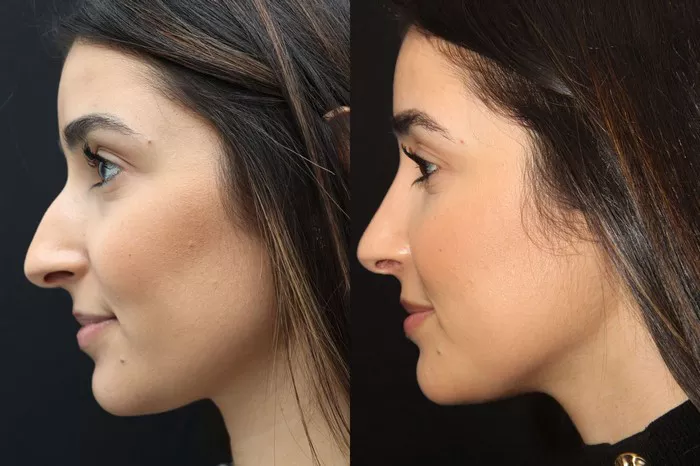Rhinoplasty, commonly known as a nose job, is a surgical procedure that is performed to reshape the nose and improve its function. The procedure involves making incisions to access the underlying bone and cartilage of the nose, which are then reshaped to achieve the desired result. After rhinoplasty, patients are often concerned about how long it will take for their bones to heal. In this article, we will discuss the timeline for bone healing after rhinoplasty and what patients can do to promote a speedy recovery.
The Healing Process after Rhinoplasty
After rhinoplasty, the healing process can take several weeks to several months, depending on the extent of the procedure. In general, the first week after surgery is the most critical for healing. During this time, patients will experience swelling, bruising, and discomfort. It is important to follow the post-operative instructions provided by the surgeon to ensure proper healing.
The bones of the nose are an important aspect of the healing process after rhinoplasty. During the procedure, the bones may be broken or reshaped to achieve the desired result. The bones will then need to heal in their new position. The healing process for bones after rhinoplasty can take several months, and patients should be patient and follow their surgeon’s instructions to ensure proper healing.
Timeline for Bone Healing After Rhinoplasty
The timeline for bone healing after rhinoplasty can vary depending on the extent of the procedure and the individual patient. In general, it can take up to six months for the bones of the nose to fully heal after rhinoplasty. However, patients may start to see improvements in the appearance of their nose within the first few weeks after surgery.
During the first week after surgery, patients will typically experience swelling and bruising around the nose and eyes. This is normal and will gradually subside over the next few weeks. By the end of the second week, most patients will be able to return to work or school, although they may still experience some swelling and discomfort.
By the end of the first month, most patients will see a significant improvement in the appearance of their nose. However, the bones will still be healing and may be fragile during this time. Patients should avoid any activities that could cause trauma to the nose, such as contact sports or heavy lifting.
By the end of the third month, the bones of the nose will be much stronger, and patients can resume most normal activities. However, it is still important to avoid any activities that could cause trauma to the nose, as the bones may still be healing.
By the end of the sixth month, the bones of the nose should be fully healed, and patients can resume all normal activities. However, it is important to continue to follow the post-operative instructions provided by the surgeon to ensure proper healing.
Factors That Affect Bone Healing After Rhinoplasty
Several factors can affect the healing process after rhinoplasty, including the extent of the procedure, the patient’s age, and their overall health. The more extensive the procedure, the longer it may take for the bones to heal. Additionally, older patients may experience a slower healing process, as their bodies may not heal as quickly as younger patients.
Patients who have underlying health conditions, such as diabetes or autoimmune disorders, may also experience a slower healing process. It is important for patients to disclose any underlying health conditions to their surgeon before undergoing rhinoplasty to ensure that they are healthy enough for the procedure.
Smoking can also affect the healing process after rhinoplasty. Smoking can reduce blood flow to the nose, which can slow down the healing process. Patients who smoke should quit at least two weeks before surgery and avoid smoking for at least two weeks after surgery to promote proper healing.
Tips for Promoting Bone Healing After Rhinoplasty
There are several things that patients can do to promote bone healing after rhinoplasty. These include:
Follow the post-operative instructions provided by the surgeon, including any restrictions on activities or medications.
Avoid smoking or using tobacco products, as these can slow down the healing process.
Eat a healthy diet rich in vitamins and minerals to promote healing.
Get plenty of rest and avoid strenuous activities that could cause trauma to the nose.
Use cold compresses or ice packs to reduce swelling and bruising.
Attend all follow-up appointments with the surgeon to monitor the healing process.
Be patient and allow the bones to heal fully before resuming normal activities.
Complications That Can Affect Bone Healing After Rhinoplasty
Although rare, complications can occur after rhinoplasty that can affect bone healing. These include infection, bleeding, and poor wound healing. Patients should monitor their incisions for signs of infection, such as redness, swelling, or discharge. If these symptoms occur, patients should contact their surgeon immediately.
Bleeding can also occur after rhinoplasty, especially during the first week after surgery. Patients should avoid blowing their nose or sneezing forcefully, as this can cause bleeding. If bleeding occurs, patients should sit upright and apply pressure to the nose for at least 10 minutes. If bleeding persists, patients should contact their surgeon.
Poor wound healing can also occur after rhinoplasty, especially in patients who have underlying health conditions or who smoke. Patients should monitor their incisions for signs of poor healing, such as slow healing or the development of a scar. If these symptoms occur, patients should contact their surgeon.
Conclusion
The bones of the nose play an important role in the healing process after rhinoplasty. It can take several months for the bones to fully heal after the procedure, and patients should be patient and follow their surgeon’s instructions to ensure proper healing. By following the tips outlined in this article, patients can promote bone healing and achieve the best possible results from their rhinoplasty surgery. If any complications occur during the healing process, patients should contact their surgeon immediately.


